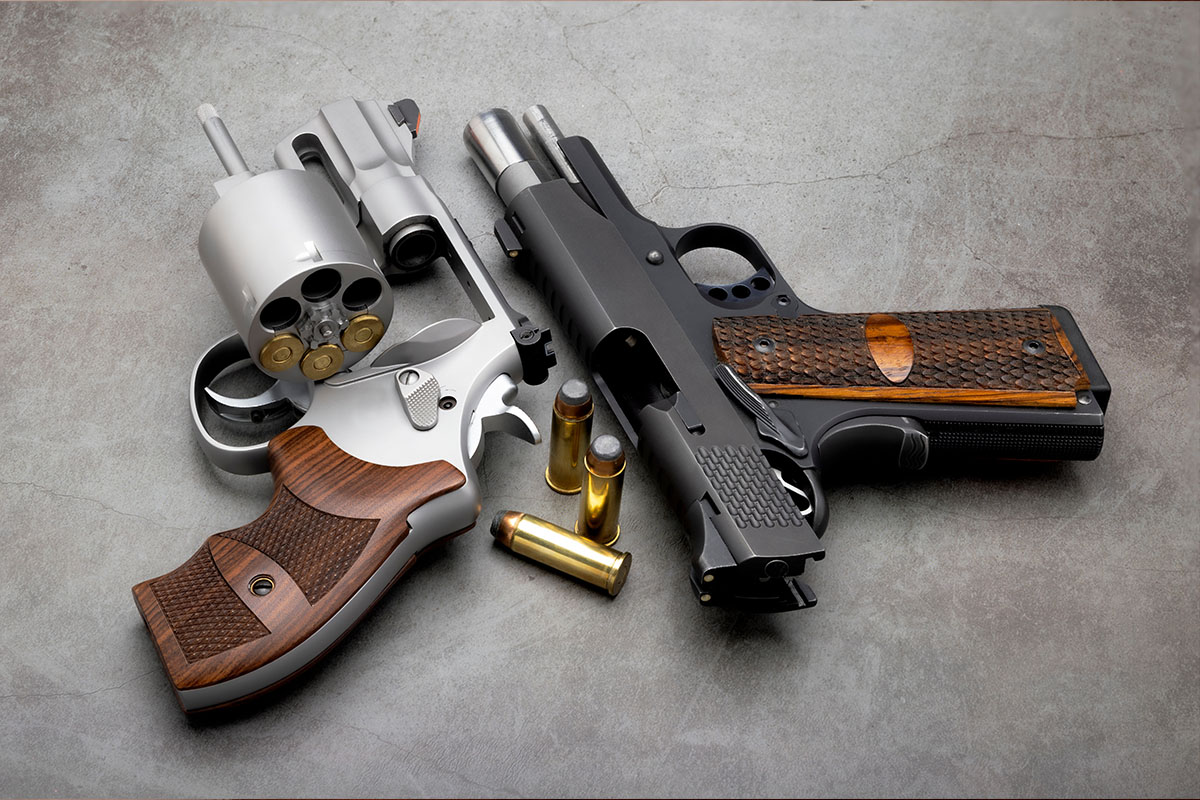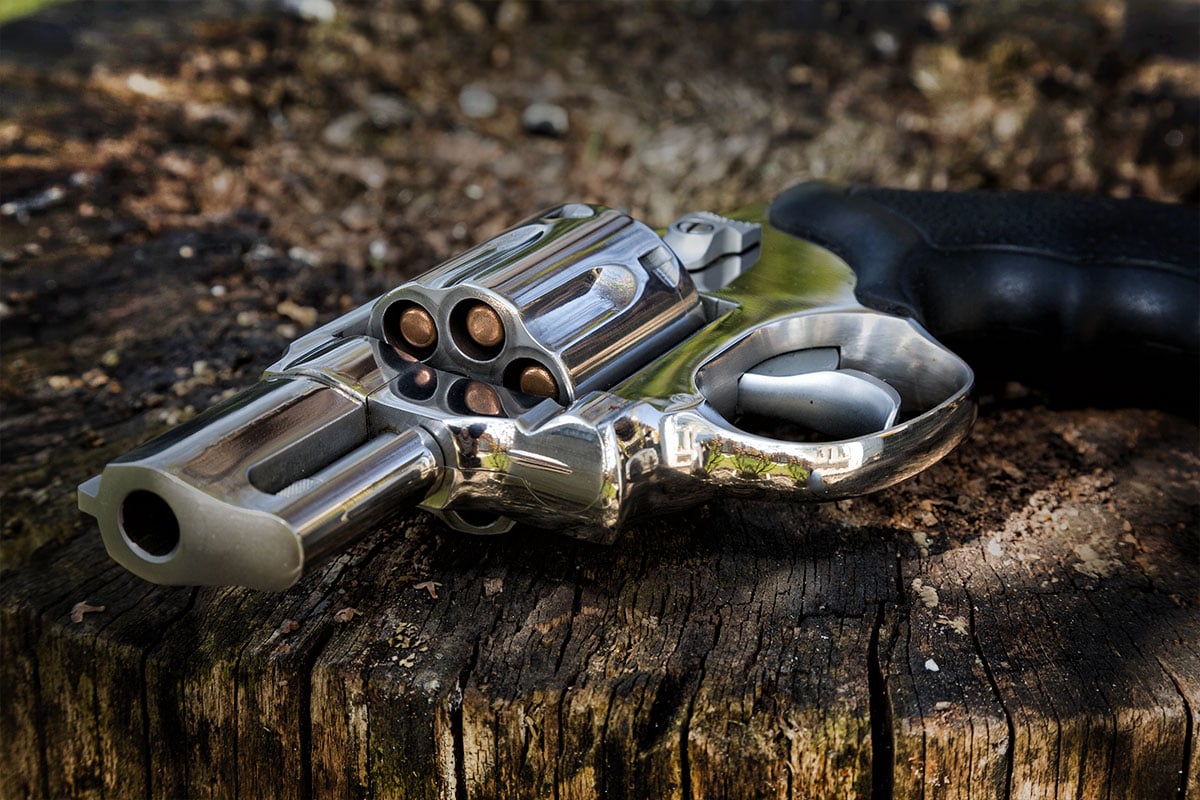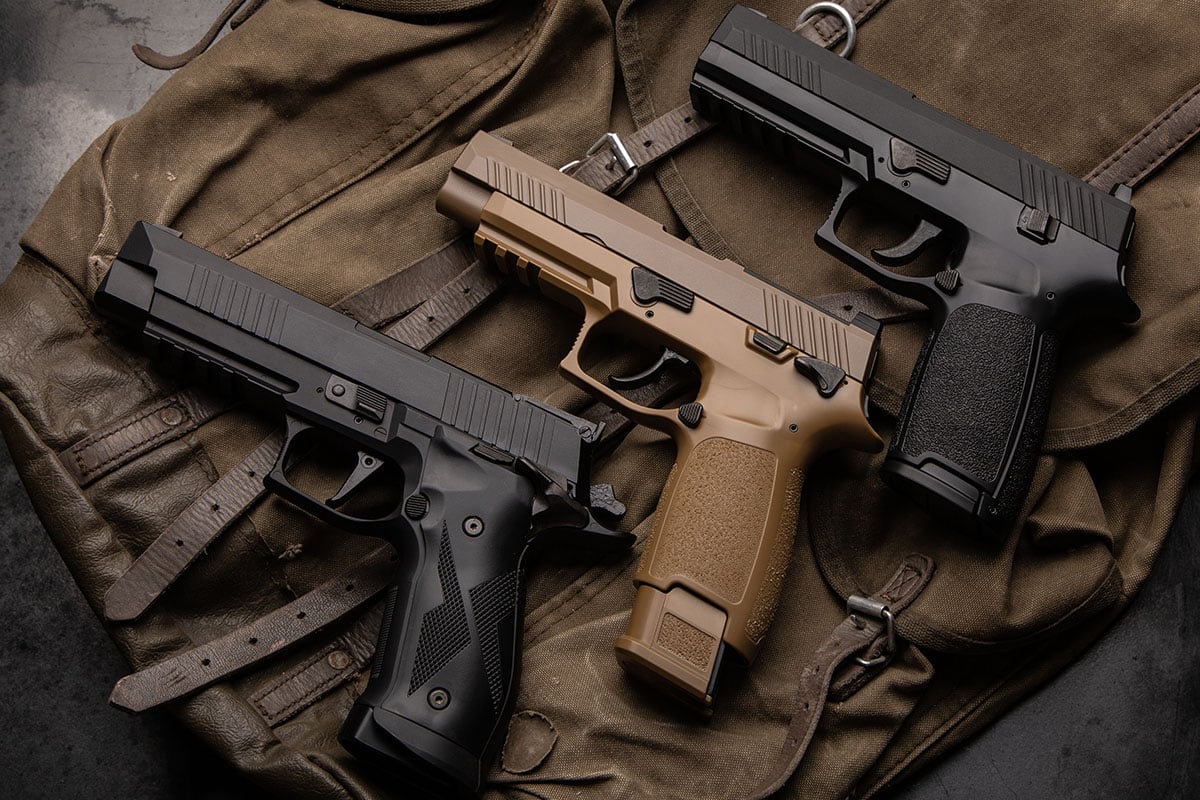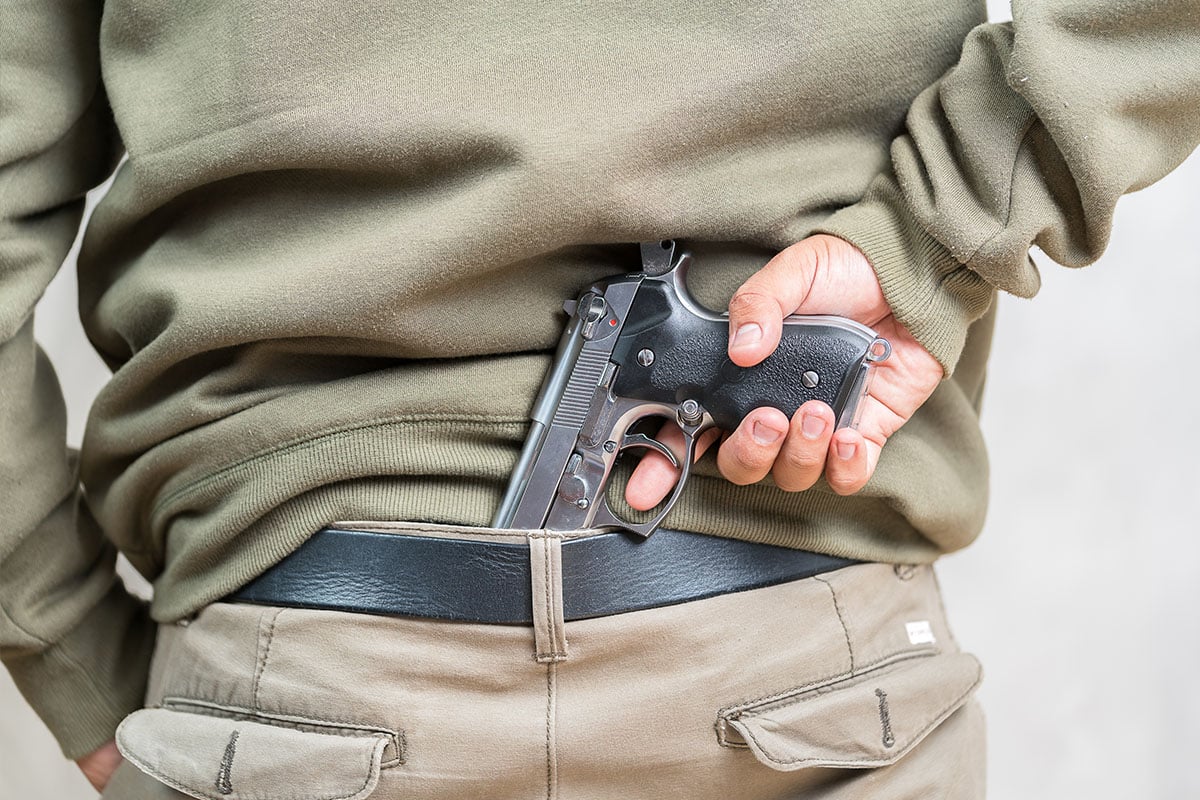Revolvers vs Semi-Automatics:What Gun Should YouUse for Self Defense?

“You gonna pull them pistols or whistle Dixie,” Josey Wales says to a group of startled Union soldiers in the signature line from the western classic “The Outlaw Josey Wales.” While none of us are likely to have corrected Josey’s slightly inaccurate reference to the Army colts strapped down in the soldier’s holsters, he was a bit incorrect in his word choice, but he was adept at using his handgun for self defense.
It’s no question which style of handgun the characters in this fictional story were using for self defense. In 1865, there was only the revolver, the semi-automatic pistol wasn’t invented for another 27 years.
The definition of pistol is a handgun with just a single chamber, while Josey and the soldiers were all carrying revolvers, which are defined as having multiple chambers in a drum style assembly.
Confusing enough? It doesn’t have to be. Revolvers are a subset of handguns separate from pistols. The preference of one over the other as a home defense weapon is purely a matter of choice, but it should take a little logical thinking on your part to determine which one best suit your needs.
Is a Semi-Automatic or a Revolver Better for Self Defense?
Think how many times you’ve seen an actual shootout? The answer is probably none. You may have watched a few on the nightly news or more likely a Youtube video or posted on social media. In reality there were only a handful of shootouts in the entire history of the old west where two men faced off on Main Street with the winner having the fastest draw. It didn’t happen then, it doesn’t happen now.
If you want a reliable handgun for self defense, forget about the idea of the gunfight. What you’ll discover instead is a confusing melee between a criminal and someone defending their person, their family or their home. The video evidence of a gunfight is often a series of mad dashes, rapidly fired bullets, sprayed at random with little concern for accuracy and terror on both sides of the barrel.
Not very reassuring is it? But then reality is never what you see in the movies. Even well trained police officers and military personnel fail to resemble the cool firing Hollywood characters most of the time. The choice of a revolver or a semi-automatic comes down to how well you can control the handgun, how accurate you are with it, and how well you can service and maintain the weapon. In that context let’s take a look at which one is better for your self defense.
What is a Revolver?

They’re easy to hold, easy to use, require less maintenance than a semi-automatic pistol, come in single or double action varieties and have been commonplace since Samuel Colt released the first popular version of this venerable handgun in 1835.
A revolver is a cylinder with chambers for holding cartridges that is rotated to fire with a mechanism that turns the cylinder to load each chamber in line with the barrel. In single action revolvers you have to pull the hammer back to rotate the cylinder, then pull the trigger to fire the weapon. In double-action revolvers, pulling the trigger rotates the cylinder while simultaneously pulling the hammer back, releasing it and firing the weapon.
When the trigger is pulled, the hammer is released, striking the firing pin, which strikes the primer in the centerfire cartridge in each chamber and sends the bullet down the barrel towards the target. It’s easier to do than to write about.
Revolvers were first made in ball and cap style with individual chambers filled like a single shot musket, or later with paper cartridges with balls attached. They quickly evolved into modern brass, or steel cartridges. Revolvers hold from five to seven rounds in each cylinder.
What is a Semi-Automatic Pistol?

Without getting too cute in the explanation, a pistol doesn’t have to be a semi-automatic. The handgun that Aaron Burr killed Alexander Hamilton with in their infamous duel was a pistol, a single shot pistol. By definition a pistol is a handgun with just one chamber. The dueling pistols of the 18th and early 19th centuries were classified as pistols, but operate much differently than modern, gas powered semi-automatic pistols.
A modern pistol such as a Glock, or Sig Sauer operates on the same principal as a semi-automatic rifle does. As the firing pin strikes the cartridge the powder explodes sending the bullet down the barrel. Part of that explosive force is released as expelled gas, that is harnessed to drive the slide back, ejecting the spent cartridge, loading a new cartridge from a spring loaded magazine in the handle and setting the hammer back to firing position all in the blink of an eye.
Modern pistols can hold from eight rounds as in a Springfield 1911, to 17 rounds as in a Glock 17.
Relative Merits of a Revolver and a Semi-Automatic Pistol
| Merit | Revolver (1 to 10 | 10 = best) | Semi-auto (1 to 10 | 10 = best) |
|---|---|---|
| Ease of Use | 8 | 6 |
| Reliability | 10 | 8 |
| Rapid Fire | 4 | 10 |
| Accuracy | 7 | 5 |
| Available Calibers | 8 | 5 |
| Maintenance | 10 | 6 |
| Reloading | 4 | 10 |
| Power | 10 | 7 |
Table Terms:
Ease of Use
- Revolver – Click off the safety, pull the trigger
- Semi-auto – Click off the safety, pull back the slide, pull the trigger
Reliability
- Revolver – few moving parts, little chance of jamming no matter the ammunition
- Semi-auto - an advanced weapon that can jam with some ammunition
Rapid-Fire
- Revolver – only as quick as the strength in your hand, dependent on trigger pull to engage complete mechanism
- Semi-auto - after initial pull of slide, will fire entire magazine in just a few seconds with the pull of the trigger
Accuracy
- Revolver – available with longer barrels, better sighting, and more prone to accuracy since they are slower to fire
- Semi-auto- usually shorter barrel, sight angle not as viable in models without rails, and more prone to “spray and pray” rather than sighting due to high rate of fire
Available Calibers
- Revolver – made in a wide variety of cartridge sizes from .22 long rifle to .460
- Semi-auto – most marketed in 9mm, .40 cal, .45 ACP, 10mm; generally available from .22 long rifle to .50; anything above 10mm will be a custom configuration
Maintenance
- Revolvers – with fewer moving parts, and open chambers they are easier to clean with just a basic gun cleaning set
- Semi-auto – many different parts, cleaning the magazine, and cleaning firing assembly require separate operations, some models require unscrewing the barrel to release the inner mechanism to clean, many springs must be removed and reassembled
Reloading
- Revolver-spent cartridges must be removed manually, then individual bullets are reloaded into the cylinder, rapid loader technology makes this quicker, as do interchangeable cylinders but there use is not common
- Semi-automatics-cartridges are ejected automatically, when the magazine is empty, push a release button, slide the magazine out, slide in another magazine, pull back the slide and continue firing, experienced shooters can replaced a magazine while remaining locked on the target visually
Power
- Revolvers – can shoot very powerful magnum cartridges like .41 Mag and .44 Mag, along with much larger .454 and .460 caliber ammunition.
- Semi-auto-mechanism dependent on delicate balance of cartridge with gun components, standardization of ammunition is key, so primarily 9mm to 10mm size, but there are smaller calibers like .22 and .25 caliber and custom larger cartridges.
Final Considerations: Revolver or Semi-Automatic for Self Defense
We’ve looked at all the relative merits of each style of handgun, we’ve even rated those merits against each other for comparison, but which one suits you for a self defense handgun?
Four Legged Attackers

In my neck of the woods, that is the wilds of the Great Plains, Rocky Mountains and the foothills in between, self defense isn’t always against a two-legged attacker. There are many instances where a more powerful handgun can give you a fighting chance alone in the wilderness, even if it is a slim one.
We pack a Ruger Blackhawk .44 Magnum when we go fishing in certain areas of the Cowboy State. It wouldn’t work on a five-pound rainbow trout, but it is a deterrent against a growing number of grizzly bear attacks in the ever expanding range of Ursa Horriblis (scientific name for the ol’ grizz). Firepower of that magnitude isn’t a necessity for most self defense situations.
Protection Against Other Gun Wielding Attackers

In almost every other area of the nation, the predators are on two legs, and usually carry handguns, knives, clubs or other lethal weapons, often a combination of several of them.
Selecting a handgun for self defense is a serious decision. If you’re an avid shooter, a revolver is a great choice due to the higher caliber cartridges that are commonly available in a magnum revolver. It’s hard to argue with the power of a.357, .41 or .44 Magnum, and the ammunition is easy to find. A larger handgun has more heft, so that’s a consideration in deciding whether you can handle the extra weight.
A semi-automatic is the modern weapon of choice for many self defense applications. It’s easy to use: just slam in a magazine, set the safety to fire, pull the slide back and start spraying lead in the direction of your attacker as fast as you can pull the trigger.
This rapid fire application of hot lead isn’t the most accurate, but it can be an effective intimidating display of firepower, and it can deliver multiple rounds into an attacker very quickly if your aim is true.
Semi-automatics are the choice of the military, police departments, federal agencies and special ops teams. They’ve done their homework with these more modern handguns, but they spend a lot of time on the range perfecting their skills. Your decision on whether to use the venerable revolver, or to have a fast-action, semi-automatic at your fingertips when an emergency arises are choices you must make on your own. Informed choices always make better decisions.